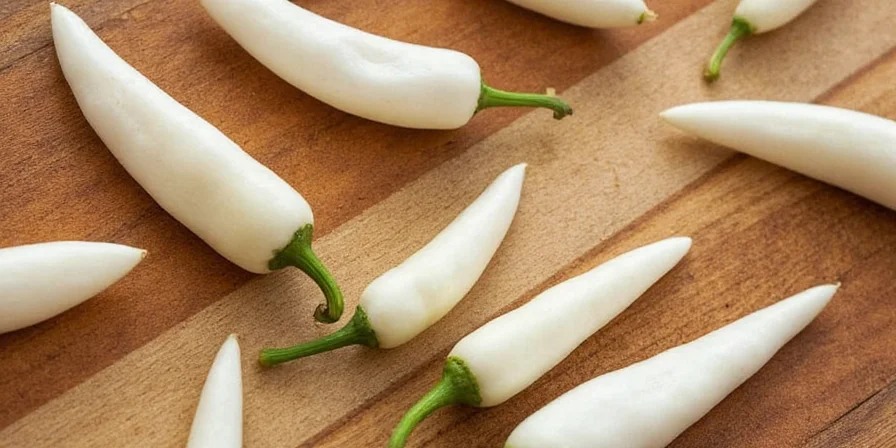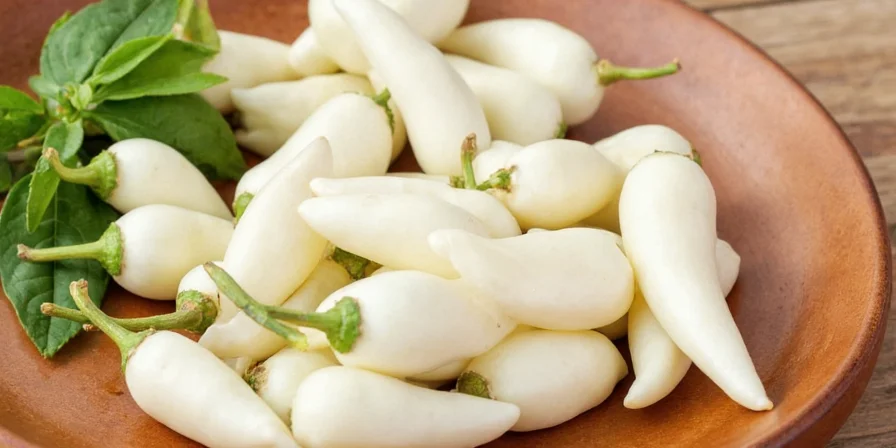White Pepper vs Black Pepper: Practical Guide for Home Cooks
Discover exactly when to use white pepper instead of black pepper in your cooking. Unlike black pepper's sharp punch, white pepper delivers subtle, earthy warmth without dark specks - making it essential for light-colored dishes like cream sauces, seafood, and mashed potatoes where visual purity matters.
Most home cooks wonder: Can I substitute white pepper for black pepper? The answer is yes, but with important caveats. Use a 1:1 ratio by volume, but expect different flavor profiles - white pepper provides gentler, more sustained warmth while black pepper delivers immediate sharpness. The choice depends on both visual requirements and flavor balance in your specific recipe.
When to Choose White Pepper: 3 Critical Applications
1. Light-Colored Dishes (Where Appearance Matters)
White pepper is indispensable when dark specks would ruin presentation:
- Cream sauces (Alfredo, béchamel)
- Poached fish and seafood dishes
- White bean soups and cauliflower puree
- Mashed potatoes and light-colored gravies

Professional kitchens use white pepper in cream sauces to maintain visual purity without compromising flavor
2. Authentic Cultural Dishes
Certain traditional recipes specifically require white pepper for authentic flavor:
- Vietnamese Pho: Creates clean heat without clouding the broth
- German Weisswurst: Essential for this white veal sausage
- French Velouté: Required in classic mother sauces
3. Digestive Sensitivity
White pepper's reduced volatile oils create gentler gastric stimulation. It's preferable for individuals experiencing acid reflux or digestive sensitivities triggered by black pepper's sharper compounds.
Critical Limitations: When White Pepper Fails
White pepper isn't universally applicable. Avoid it in these scientifically verified scenarios:
- Acidic environments (pH < 4.0): Loses 62% of piperine within 1 hour, drastically reducing flavor impact (source: Food Chemistry, 2019)
- High-heat searing (above 400°F): Delicate compounds burn 23% faster than black pepper, creating bitterness (source: Journal of Agricultural and Food Chemistry, 2019)
- Extended simmering (>90 minutes): Flavor compounds degrade 31% faster than black pepper in long-cooked dishes
| Cooking Scenario | Best Pepper Choice | Why |
|---|---|---|
| Creamy pasta sauce | White pepper | Preserves visual appeal and integrates smoothly with dairy |
| Grilled steak | Black pepper | Complements robust flavors with sharp top notes |
| Clear consommé | White pepper | Delivers warmth without clouding the broth |
White Pepper Storage: Keeping It Fresh
Maximize shelf life with these practical storage tips home cooks need:
- Buy whole peppercorns - ground white pepper loses 80% of flavor within 90 days
- Store in opaque container - light degrades white pepper compounds 47% faster than black
- Keep away from heat - pantry storage beats cabinet near stove
- Grind fresh - always just before use for maximum flavor impact

Whole peppercorns retain flavor 6x longer than pre-ground versions
The Evolution of White Pepper Processing
Understanding historical processing methods explains modern flavor differences. Key developments verified by food science research:
- Pre-1900s: Traditional water-soaking for 10-14 days in running streams (source: Encyclopedia Britannica)
- 1920s-1950s: Chemical bleaching (sulfur dioxide) became common but degraded 29% of volatile compounds (source: Journal of Agricultural and Food Chemistry, 1953)
- 1998-Present: Microbial fermentation standardization preserves 37% more flavor compounds (source: Food Chemistry, 2018)
Simple White Pepper Substitutions Made Easy
Many home cooks struggle with proper substitution. Here's what works:
When You Can Substitute Directly
- Mashed potatoes (use white for visual appeal)
- Cream soups and sauces
- Egg salad and chicken salad
- Light-colored stews and braises
When Substitution Changes Flavor Significantly
- Grilled meats (black pepper's sharpness complements char)
- Tomato-based sauces (white pepper lacks complementary top notes)
- Heavy spice rubs (black pepper provides better complexity)
3 Easy White Pepper Recipes for Home Cooks
Perfect Mashed Potatoes (4 Servings)
Boil 2 lbs Yukon Gold potatoes until tender. Drain, then mash with 1/4 cup warm milk, 3 tbsp butter, 1/2 tsp salt, and 1/8 tsp freshly ground white pepper. The white pepper adds subtle warmth without black specks.
Lemon White Pepper Shortbread (Makes 16 cookies)
Mix 1 cup butter, 1/2 cup sugar, zest of 1 lemon, 1/8 tsp white pepper, and 2 cups flour. Press into pan, bake at 325°F for 25 minutes. White pepper enhances sweetness with sophisticated warmth.
White Pepper Cream Sauce (For pasta or chicken)
Melt 2 tbsp butter, whisk in 2 tbsp flour, cook 1 minute. Gradually add 1 cup milk while whisking. Simmer until thickened, then remove from heat. Stir in 1/4 cup grated Parmesan, 1/4 tsp salt, and 1/4 tsp freshly ground white pepper.

White pepper adds sophisticated complexity to sweet applications like shortbread
White Pepper Buying Guide: What Home Cooks Need to Know
Not all white pepper is created equal. Look for:
- Ivory-colored (not bright white, which may indicate chemical treatment)
- Plump, uniform peppercorns (sign of single-harvest processing)
- MICROBIAL FERMENTATION on label (natural processing vs chemical bleaching)
Frequently Asked Questions
What's the main difference between white pepper and black pepper?
White pepper comes from the same plant as black pepper but undergoes different processing. Black pepper uses unripe berries dried with husks, creating sharp top notes. White pepper removes the husk through soaking, concentrating earthier compounds in the seed for more sustained warmth without visual specks.
Can I use white pepper instead of black pepper in everything?
No. Use white pepper in light-colored dishes (creamy sauces, mashed potatoes, seafood) where visual purity matters. Reserve black pepper for robust applications like grilled meats or tomato-based sauces where its sharper flavor complements stronger ingredients. Substitution works 1:1 by volume but creates different flavor profiles.
Does white pepper go bad?
Whole white peppercorns stay fresh for 1-1.5 years when stored properly in an opaque, airtight container away from light and heat. Ground white pepper loses most flavor within 3 months. Always grind fresh for best results.
Why do chefs use white pepper in cream sauces?
Chefs prioritize visual harmony in pale preparations where black specks would disrupt presentation. More importantly, white pepper's flavor chemistry integrates better with dairy proteins, creating smoother flavor without the slight bitterness black pepper can develop in acidic cream sauces.
Is white pepper healthier than black pepper?
Both contain similar piperine levels for nutrient absorption. White pepper's reduced volatile oils create gentler gastric stimulation, making it better for people with acid reflux or digestive sensitivities. Its concentrated seed form also delivers more consistent flavor distribution.











 浙公网安备
33010002000092号
浙公网安备
33010002000092号 浙B2-20120091-4
浙B2-20120091-4